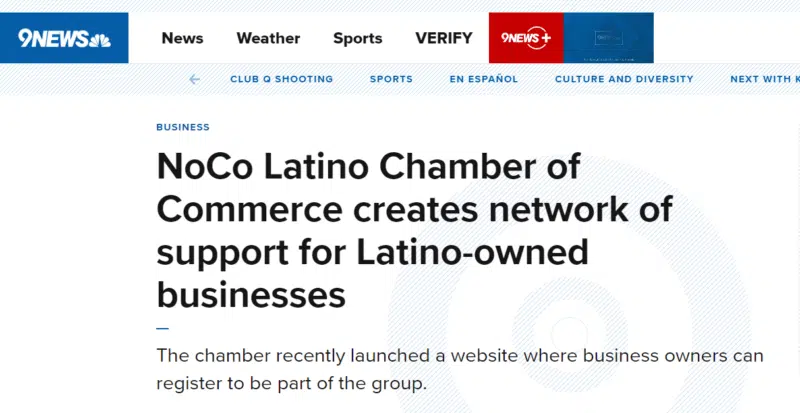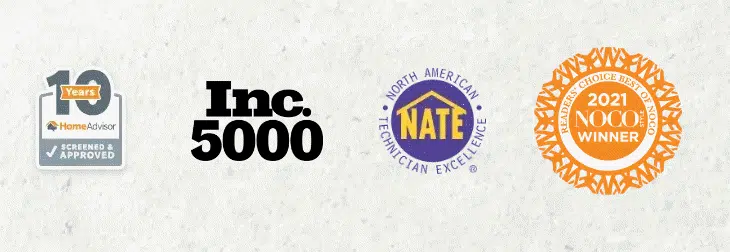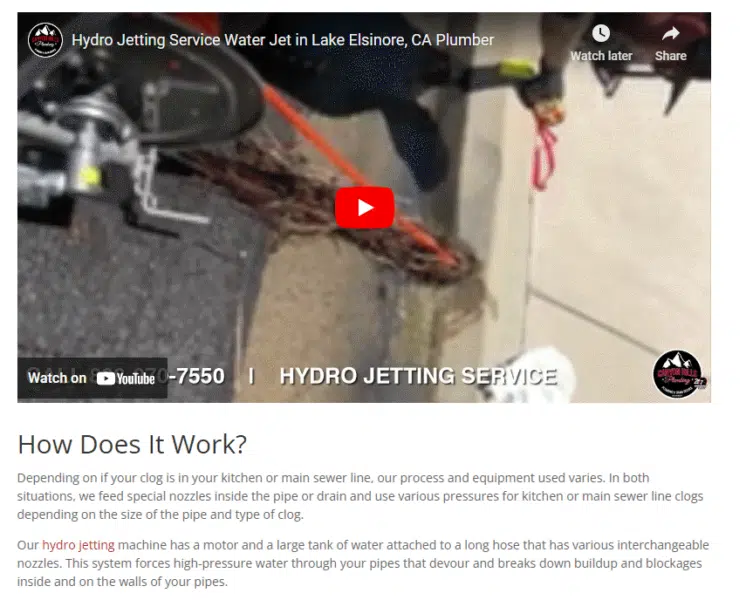4 main types of local links and how to earn them
Earning links for your local business starts with evaluating your organization’s values and making a genuine impact in your community.
Getting backlinks is like getting regular exercise. It’s time-consuming, and the results aren’t immediate, but a daily workout contributes to your long-term health.
Similarly, regularly working on a solid backlink profile builds authority for your website and contributes to organic ranking growth.
In local SEO, getting backlinks is particularly challenging. Small businesses often don’t have the same resources as an enterprise organization for links. There’s not enough time, money, and energy to build a local backlink profile.
However, limited resources don’t have to limit local link building opportunities.
Often, local businesses do more to support local link growth than they realize. By defining the types of local links, we can reflect on an organization’s values.
Typically, local links are less about developing stellar PageRank and more about building relationships in the community.
4 common types of local links
These are the most common types of local links:
- Citations and data aggregators.
- Community engagement.
- National and local awards.
- Relevant local content, campaigns, tools, reports, and studies.
Each type of local link requires a slightly different approach, but they all contribute value to the local community.
Citations and aggregators help customers find phone numbers and addresses, while local awards help customers trust the business.
Achieving local links that will truly impact growth requires a shift in mindset.
Instead of thinking about links as an SEO “to-do” item, think about them as an opportunity to connect with your neighbors.
The best local businesses are known less for their SEO and more for their community involvement.
A company that raises funds for a local charity or sports team can receive more local recognition than a business with great title tags.
A company that does both of these things can win at local SEO.
Let’s dive more into each type of local link below.
1. Citations and data aggregators
Local business citations, also known as online directories, are a well-known local link building tactic. Here, a business’s basic information is listed across websites that resemble a phone book.
The SEO theory behind citations: by submitting location information across a network of online profiles, a local business establishes online consistency for its name, address, and phone number (also known as “NAP consistency”).
Google’s Knowledge Graph uses this directory information to confirm the business information and accurately share it with users.
Common examples of online directories include:
- Online phone books (i.e., Whitepages)
- GPS submissions (i.e., Garmin)
- Voice search (i.e., Siri)
- Secondary search engines (i.e., Microsoft Bing, Yahoo)
- Travel websites (i.e., Airbnb, TripAdvisor)
As a search engine, Google attempts to provide accurate, credible information for every single search query.
Listing your business information with local citations helps Google and other search engines achieve this goal.
Data aggregators
Rather than spending hours submitting to online directories and updating them, an organization can pay for data aggregators that automate most of the process.
Three companies offer a “bulk submission” service, placing business citations across a specific network of online directories.
- Data Axle
- Neustar
- Foursquare

Each of these organizations submits to a different list of online directories, though there can be some overlap.
For example, Data Axle and Neustar might submit to Whitepages, while only Neustar might submit to Apple.
The exact list of backlinks generated by each aggregator is unknown, but a business typically receives anywhere from 25-100+ backlinks from each one (some of them overlapping).
Aggregator resellers
Many SEO agencies and SEO tools include a service that will submit to all three data aggregators.
For example, BrightLocal submits to the three aggregators listed above and some smaller vendors (i.e., Yellow Pages Network).
Some of these citation link building services are available for a yearly fee, while others have a one-time fee.
SEO impact of local citations
Local SEO experts have noted a downward trend in focus around local citations. In the 2021 Whitespark Local Search Ranking Factors survey, top industry contributors were surveyed on which local ranking factors make the most impact.
The score for local citations was among the lowest impact ranking factors in 2020 and 2021. Survey participants stated they achieved limited growth from citation submissions, indicating high effort for minimal results.
Ultimately, the value of local citations is relative to other SEO efforts and the age of the business.
- A brand-new, first-time business needs to get the basics set up to expand its recognition on search.
- An older business might need an update to its citations to ensure they’re accurate.
While it might not be clear how many local citations help, they are a fundamental piece of the local link building process for years.
Online directories are an attainable, straightforward way to gain local links or update existing directory information because all a business needs is a one-time fee, an address, and a phone number.
2. Community engagement
Getting local links can show your organization’s goodwill to both Google and the greater community.
In “A Christmas Carol,” Ebenezer Scrooge runs a bookkeeping business that is seemingly cold, calculating, and heartless. He is known by the larger community as a miser.
This bad attitude gives Scrooge’s business a negative reputation, leaving him counting profits in a dark, empty room.
In today’s business ecosystem, similar community perceptions can play a role in local SEO.
If a business gives to and participates within its community, that business is talked about, people engage with the brand, and the conversation continues online.

By investing in the local community, an organization can organically grow its backlink profile and achieve SEO growth.
Types of community engagement and backlinks include:
- Local sponsorships.
- Local events.
- Scholarships.
- Charities.
- Volunteering.
All of these local link building activities speak to one central facet – community. By investing in its community, a business is investing in itself.
To get started with community engagement, circle back to your organization’s values. What is most important to the company?
Principles such as service, leadership, communication, and education could be applied to a local initiative with link building potential.
For example, a local attorney’s office might value clear communication as its guiding principle.
To channel this principle, the attorney could lead a local seminar on citizens’ researching their rights around an upcoming zoning proposal.
This seminar might result in a backlink to the attorney’s site from the local paper that announces upcoming local events.
SEO impact of community engagement links
It might seem time-consuming to spend additional time or resources on volunteering or a sponsorship, but the return on investment can be significant.
When a local newspaper publishes an article about a $500 scholarship or sports team sponsorship from an organization, that organization is receiving a backlink or mention from one of the most reputable websites in its community.
This recognition builds expertise, authoritativeness, and trustworthiness (E-A-T) with search engines, contributing to the website’s organic ranking growth.

When competitors rank because of a strong local backlink profile, community engagement is a reliable path to outranking them because it attracts multiple stakeholders who might share links.
A single contribution to charity might result in links from personal blogs, the organization that received the donation, and a local newspaper.
Additionally, community involvement doesn’t necessarily need to result in a link.
Sometimes a mention of the brand name is enough to build the organization’s reputation and improve its online credibility.
SEO practitioners have started to think beyond link building, including it in the larger practice of “off-page SEO,” which weighs brand mentions almost equally to links.
It isn’t easy to measure the complete SEO impact of community participation, but everything we know about search engines indicates that it makes a difference.
By investing in community engagement, an organization does more than improve rankings – it joins a conversation.
3. National and local awards
Receiving an award results in more than a plaque on the wall or feeling good about your business practices. An award is a trust signal.

When choosing a vendor, customers rely on awards and community recognition to decide on the right fit for their needs.
Types of award opportunities for a small business include:
- National accreditation (i.e., Better Business Bureau).
- Local trade organization awards/certifications.
- Local publication awards (i.e., “Best of Phoenix”).
- Local environmental awards.
- Local awards for community involvement.
The first step to getting locally recognized is researching local awards in an organization’s line of business and local area.
A common starting point is the Better Business Bureau. Getting accredited by this large national organization allows customers to see an organization’s credibility.
Another opportunity to check for awards is the local Chamber of Commerce, which serves as a resource for businesses hoping to connect with the greater community.
Once organizations find an award that aligns with their values, they can develop a plan around the best path to receiving that award.
Sometimes the organization has already achieved many existing aspects of the award, and trying to win is as simple as applying or reaching out to the award company.
When winning the award isn’t an immediate scenario, an organization can develop a company-wide initiative.
Leadership can announce the goal, sharing how it aligns with the organization’s values. From there, a specific team can review why past award winners were recognized.
By developing a plan around the core elements of the award, the organization’s existing successes, and new initiatives to meet award criteria, organizations take a proactive approach to winning the award and achieving backlinks.
SEO impact of national and local awards
It has been theorized that search engines consider awards as a measure of an organization’s expertise, authoritativeness, and trustworthiness.
In the Search Quality Rater Guidelines (the primary resource for studying E-A-T and relevance in SEO), Google tasks its raters with researching a business’s trustworthiness through the awards it has received:
“News articles and informational articles can help you learn about a company and may include information specific to reputation, such as awards and other forms of recognition, or also controversies and issues.”
Achieving local links through awards involves improving a business as a whole.
Rather than being segmented in its own SEO channel, local link building can be incorporated into an organization’s broader goals.
A small business can use community and organizational values to improve its products and services, build long-lasting relationships, and achieve local links.
When small businesses pursue the improvement of their operations, SEO growth is a secondary benefit.
4. Relevant local content and studies
In addition to leading the community through stewardship and award recognition, an organization can become a thought leader by sharing resources about its practice area with local citizens.

Types of local content will vary based on the type of business or the links desired. Some examples of local content for link building promotion include:
- Gathering information about the average age of a home in the area and its energy consumption.
- Localizing a national article about a consumer’s average savings account to the local neighborhood’s average savings account.
- Interviews with the company’s top experts about their day-to-day challenges.
- A mental health initiative for all neighboring businesses.
These are examples of content that can be published directly on the website, which may receive attention and backlinks from third-party websites.
Newspapers, local blogs, community forums, and other online resources always look for the latest information to share with their readers.
An organization can drive the conversation by publishing content that is new, relevant, and helpful.
When brainstorming ideas for local content, an organization should encourage all and any ideas. Creativity is essential to local content promotion and the links it can achieve.
SEO impact of local content and case studies
The results of a local content initiative vary widely based on subject matter and audience. However, the desired outcome is always the same: backlinks and brand mentions.
The theory behind local content for backlinks posits that if the content is interesting enough, people will talk about it.
When an organization publishes interesting content and shares it with local news outlets and consumers, it will receive backlinks and brand mentions.
These backlinks and brand mentions will improve E-A-T and organic rankings.
When the value of local content is apparent, the organic growth from that content will also be apparent.
How to get local links
So, how do you get local links?
The path to local links should look less like a hunting expedition and more like a garden. Plant some seeds and see which sprout:
- Establish a citation baseline.
- Reflect on company values.
- Channel company values into a multi-faceted link building strategy.
- Execute strategy and achieve links.
- Review what is working, what is not working, and repeat.
Targeting local links based on community needs is an opportunity to outrank local competitors ranking by default.
By integrating your backlink strategy with existing values, the organization connects with the fundamental essence of local link building – caring.
Caring is the essence of local backlinks because it means that your organization doesn’t want links for the sake of links.
- It cares about having the right information.
- It cares about giving back to the community.
- It cares about offering reliable services and has been recognized for that.
- It cares about moving the industry forward and being the best at what it does.
Caring and local link building are one and the same.
So while it might seem daunting to pursue these types of local links, the process is less about developing an SEO checklist and more about reflection.
If your organization has already spent some effort defining what matters, then it will be that much easier to make an impact within the community and receive local links.
Contributing authors are invited to create content for Search Engine Land and are chosen for their expertise and contribution to the search community. Our contributors work under the oversight of the editorial staff and contributions are checked for quality and relevance to our readers. The opinions they express are their own.
Related stories
New on Search Engine Land